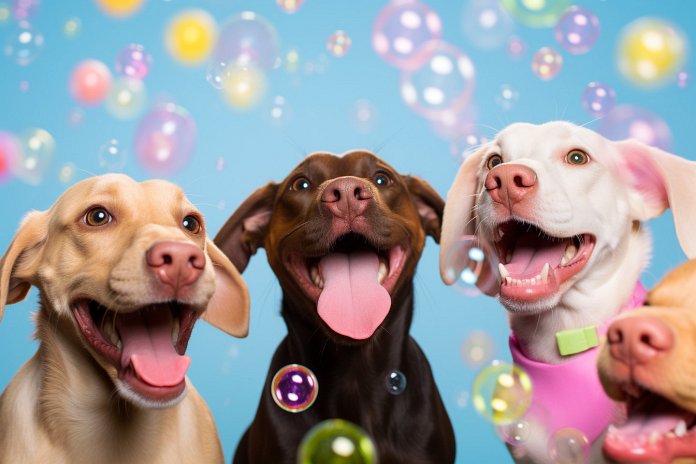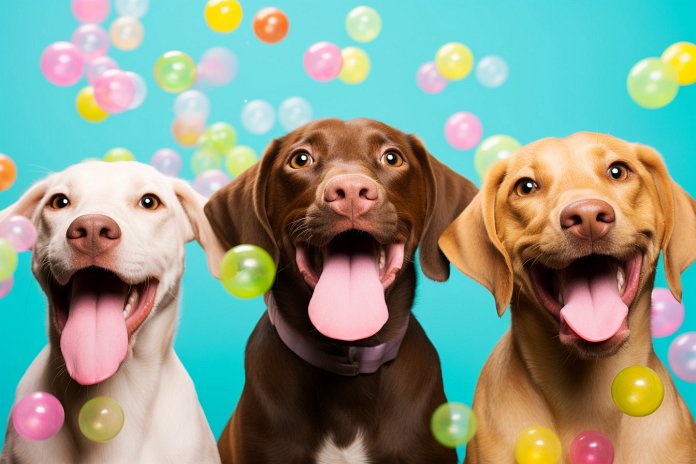
Let’s get straight to the point – NO! You should never give your dog chewing gum. It’s a common mistake for new pet owners or those unfamiliar with dogs to think that gum can freshen their dog’s breath. However, it’s a huge mistake! Not only is gum a choking hazard for dogs, but it also contains potentially toxic ingredients that can harm them.
Signs Your Dog Got into the Chewing Gum
If your dog accidentally ingests gum, there are signs you should watch out for. Since dogs can’t chew gum, choking is a significant risk. If your dog is having trouble breathing or seems like something is stuck in their throat, it’s likely they got into the gum. Swallowing gum can also lead to hypoglycemia, which can cause stumbling, loss of awareness, seizures, or even a coma. The culprit behind this is xylitol, an ingredient in gum that dogs cannot digest properly.
Body Language
Your dog may exhibit certain body language signs to indicate something is wrong after ingesting gum. These signs can include shaking, panting, chewing, drooling, and whimpering.
Other Signs
In addition to the body language signs, your dog may also show signs such as choking, stumbling, coma, seizure, or yellowing of the skin or gums.
The History of Dogs and Gum
The dangers of chewing gum for dogs are relatively recent. Ancient dogs didn’t have to worry about being poisoned by gum. However, the gum they chewed was made of tree sap, not the synthetic gum we have today. As dogs became more common in households, the risk of them ingesting gum increased. Dogs are attracted to the smell of gum, and it can easily be mistaken for food. Therefore, it’s important to keep gum and other toxic substances out of your dog’s reach.
Science Behind Chewing Gum and Dogs
Aside from being a choking hazard, gum contains an ingredient called xylitol, which is toxic to dogs. Dogs cannot process xylitol correctly, and it can lead to liver damage, hypoglycemia, shock, and even death.
How to Train your Dog to Avoid Chewing Gum
While you can’t always supervise your dog, training them to respond to commands like “don’t,” “no,” and “drop it” can prevent them from ingesting harmful substances. This training can save you from vet visits and your dog from pain. It’s also important to ensure your dog is comfortable with vet visits, as they may need immediate care if they accidentally ingest gum. Finally, make sure to store gum in a place where your dog cannot access it.
Chewing gum can be extremely dangerous for dogs due to its choking hazard and toxic ingredients.

Tips & Things to Know
1️⃣ Never give your dog chewing gum, not only is it a choking hazard but it also contains potentially toxic ingredients, such as xylitol. Instead, use dog-friendly treats and toys to freshen your pet’s breath.
2️⃣ Be aware of the signs that indicate your dog may have accidentally consumed gum. These include breathing troubles, choking, signs of hypoglycemia like stumbling, seizures, or even coma, as well as body language like shaking, panting, chewing, drooling, and whimpering.
3️⃣ Train your dog to respond to commands like “don’t,” “no,” and “drop it,” to prevent them from eating harmful substances. Also, ensure your dog is comfortable with visits to the vet, associating these trips with positivity and affection. Always store gum and other potentially harmful substances out of your pet’s reach.
Frequently Asked Questions, Answered ✅
1. Can I give my dog chewing gum?
No, you definitely cannot give your dog chewing gum. It is a choking hazard and contains potentially toxic ingredients for dogs.
2. What are the signs that my dog got into chewing gum?
Signs that your dog got into chewing gum include choking, stumbling, seizures, coma, yellow skin or gums, shaking, panting, chewing, drooling, and whimpering.
3. Why is chewing gum dangerous for dogs?
Chewing gum contains an ingredient called xylitol, which dogs cannot process correctly. Xylitol is toxic to dogs and can cause liver damage and failure, hypoglycemia, shock, and even death.
4. How can I train my dog to avoid chewing gum?
Training your dog to listen to commands like “don’t,” “no,” and “drop it” can help prevent them from chewing gum. Additionally, making sure your dog is comfortable with vet visits and not storing gum where your dog can access it are important.
5. How did dogs and gum become a dangerous combination?
Ancient canines did not have to worry about being poisoned by gum made of tree sap. The dangers of chewing gum for dogs arose with the introduction of synthetic properties and the global movement of dogs into homes. Dogs are attracted to the smell of gum and might try it if given the opportunity.